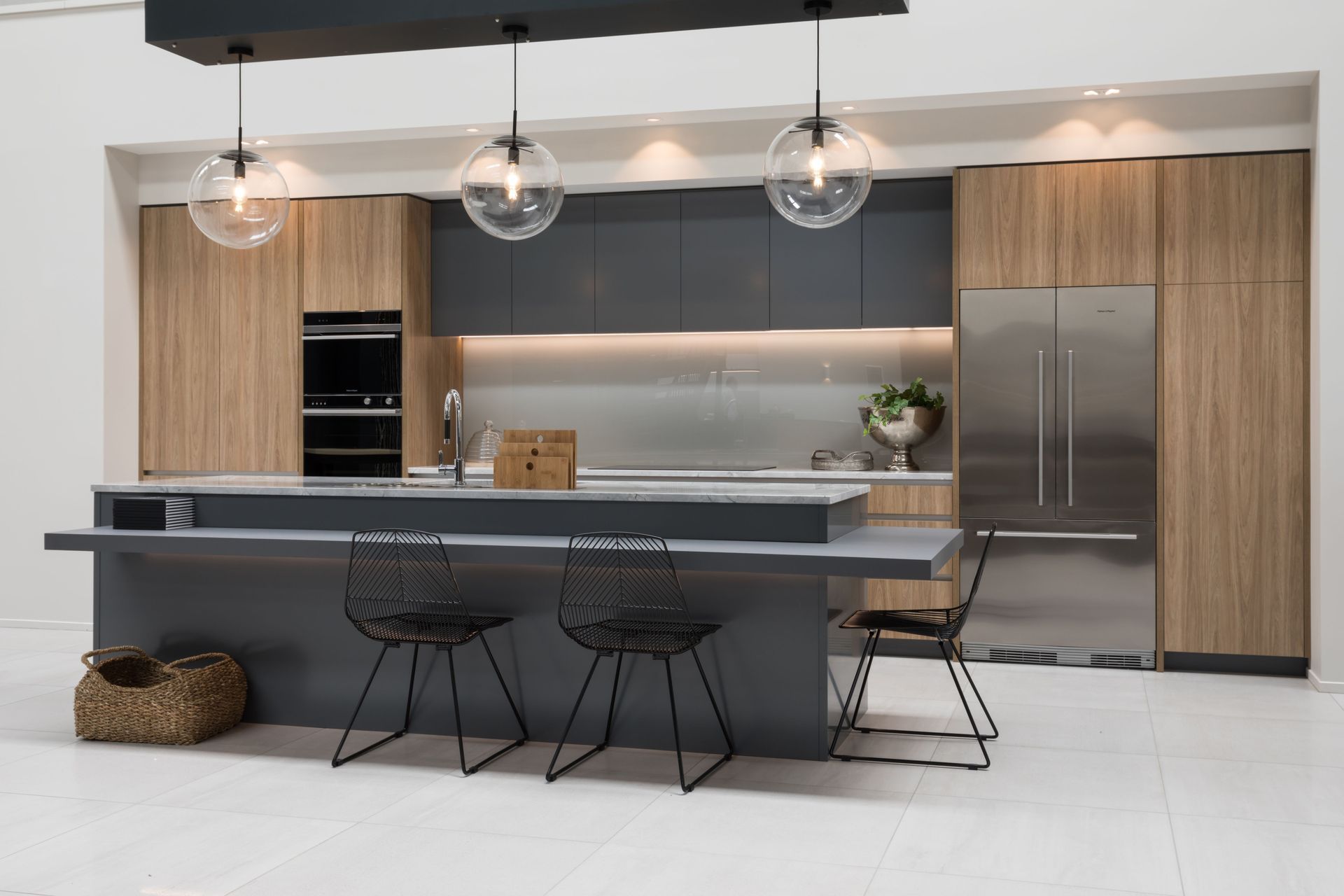Expert tips for choosing the perfect glass splashback
Written by
26 March 2023
•
5 min read

Personalising our homes is one of the great pleasures of life. It’s how we make our spaces feel unique, and acts as one of the primary physical conduits through which we convey our identity.
And if our homes are such a significant factor as a physical manifestation of our personalities, then it follows that the most significant, most utilised room in the house would be of special importance in this regard.
Many New Zealanders give their kitchen this distinction; it usually acts as the de facto gathering place of the home, and many architects and interior designers designate it as a focal point around which the rest of the living space is built. Kitchens are so important that often they are the deciding factor in a prospective purchaser’s decision to buy a home – so the aesthetic of this room, where we spend so much time, is crucial to get right.
There are many factors to consider for kitchen aesthetics: appliances, cabinetry, and benchtops are some of the most important. But there’s one feature that’s especially customisable and can come in thousands of different colours and aesthetic configurations: glass splashbacks.

Splashbacks: the aesthetic focal point for any kitchen
They’re a feature that can make or break a kitchen – since they’re at eye level and usually positioned right in the middle of the space, it’s a focal point within a focal point. So it’s vital, according to Image Glass owner and commercial director Gina Collins, to get it right – and to do that, there are a few things to consider.
"My first suggestion for choosing a splashback is to wait until the kitchen is installed," says Gina. "Familiarise yourself with what is available – metal coated, mirror and antique mirror, textures, matt finish and printed. Secondly, you will have a much better chance of success if you live with your kitchen and get a feel for how everything you have chosen until this point comes together."
Consider the dynamic between benchtop and splashback: pull a secondary colour from the benchtop for the splashback.
“The first thing I discern from our clients is whether this is their forever home,” says Collins. “Because this will determine if it’s a good idea to personalise the space with something stand out like printed glass, marbled, or antique mirror. If the answer to that question is no then it’s worth considering a more neutral palette that tones and introduce colour with appliances.”
Whether it’s a forever home (or not) it’s definitely worth considering the dynamic between the benchtop and the splashback area.
“Yes, your overall colour scheme plays a part – but if you really want to make your splashback pop, you’ll want to pull a secondary colour from the benchtop.
“Your benchtop will generally have some colour in it, even if it’s a grey marble or a speckly one. If you take out that secondary colour and make it the central colour of the splashback, which naturally contrasts with the bench, the combination really works.”

How to get splashbacks right
Many renovators spend a larger proportion of their budget on the kitchen – so it’s natural to want to extract as much aesthetic value as possible. If you invest a lot of money in this part of the house, Collins says, then it’s imperative that the splashback and benchtop work in harmony and complement each other.
Of course, some people want to go that extra step further and make their splashback the central focus of the kitchen, standing alone as a focal point without relying on surrounding colours.
“That’s absolutely doable as well,” says Collins. “In that case, you may want to use an especially bright colour, or maybe an antique mirror, or textured glass – anything that makes the splashback the standout feature as opposed to the benchtop.”

Have an idea of what you want in advance, but be flexible as once everything is installed you may need more colour or less.
Collins says she has first-hand experience with the consequences of getting splashbacks wrong.
“I’ve had a client who redid her splashback four times, because each time she did it, she didn’t like the colour it,” says Collins. “It was certainly nothing we did; she was just particularly discerning. But that kind of thing really brings it home how much a splashback can affect the space – it can completely change the vibe.”
Image Glass’s solution to problems like this is simple: the company has a showroom with an extensive range of 300mm x 300mm tiles of every single colour that they offer, in many different finishes. Once the splashback is ready for a site measure, these samples can be viewed in situ so clients can see how the colour or texture reacts to the finished space.
“It brings much more surety to the final decision – especially if your splashback is the final detail to finish in the kitchen,” says Collins. “Because generally, when you get the right colour and put it against your benchtop, you’ll know.”
Learn more about Image Glass and its expertise in splashbacks.